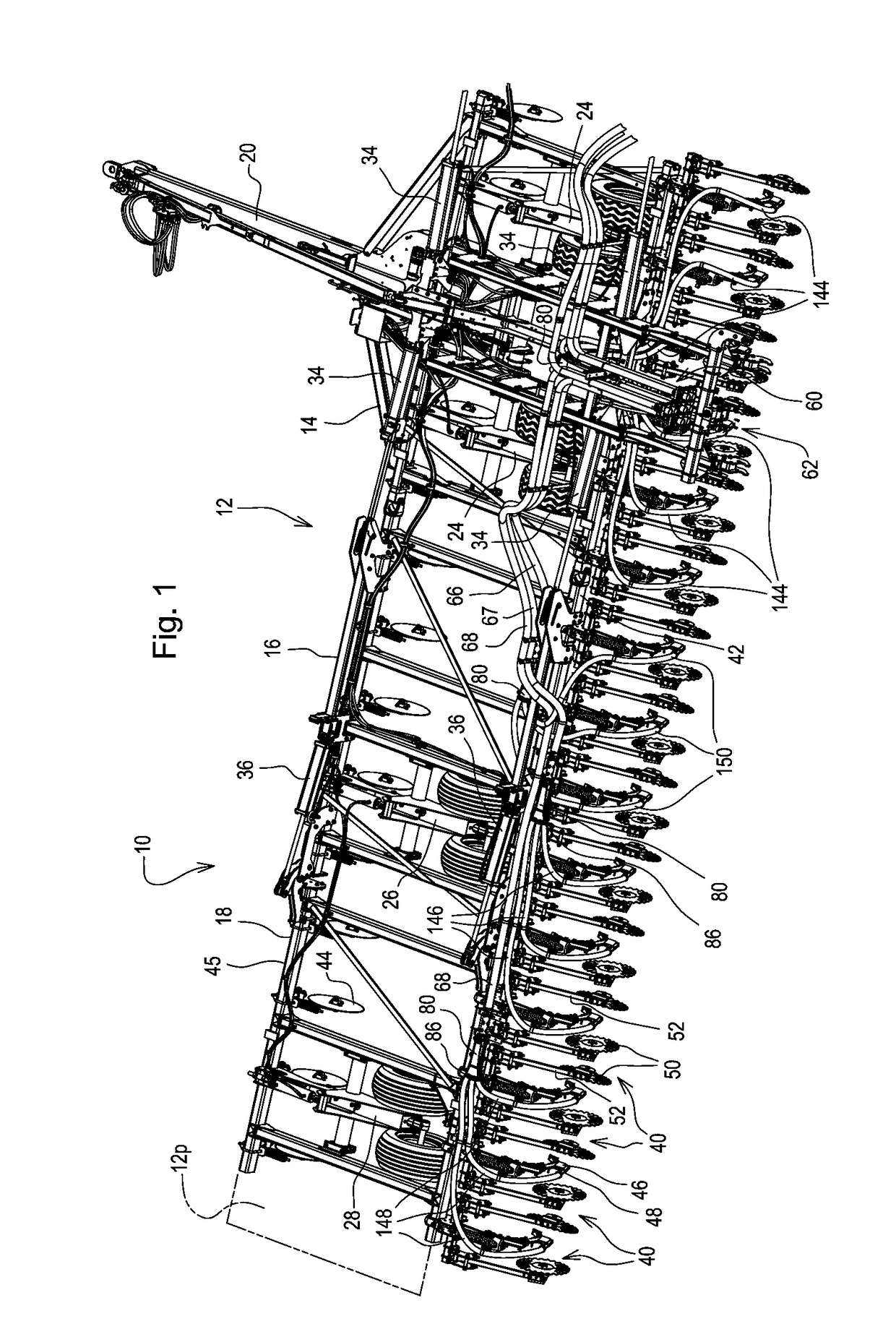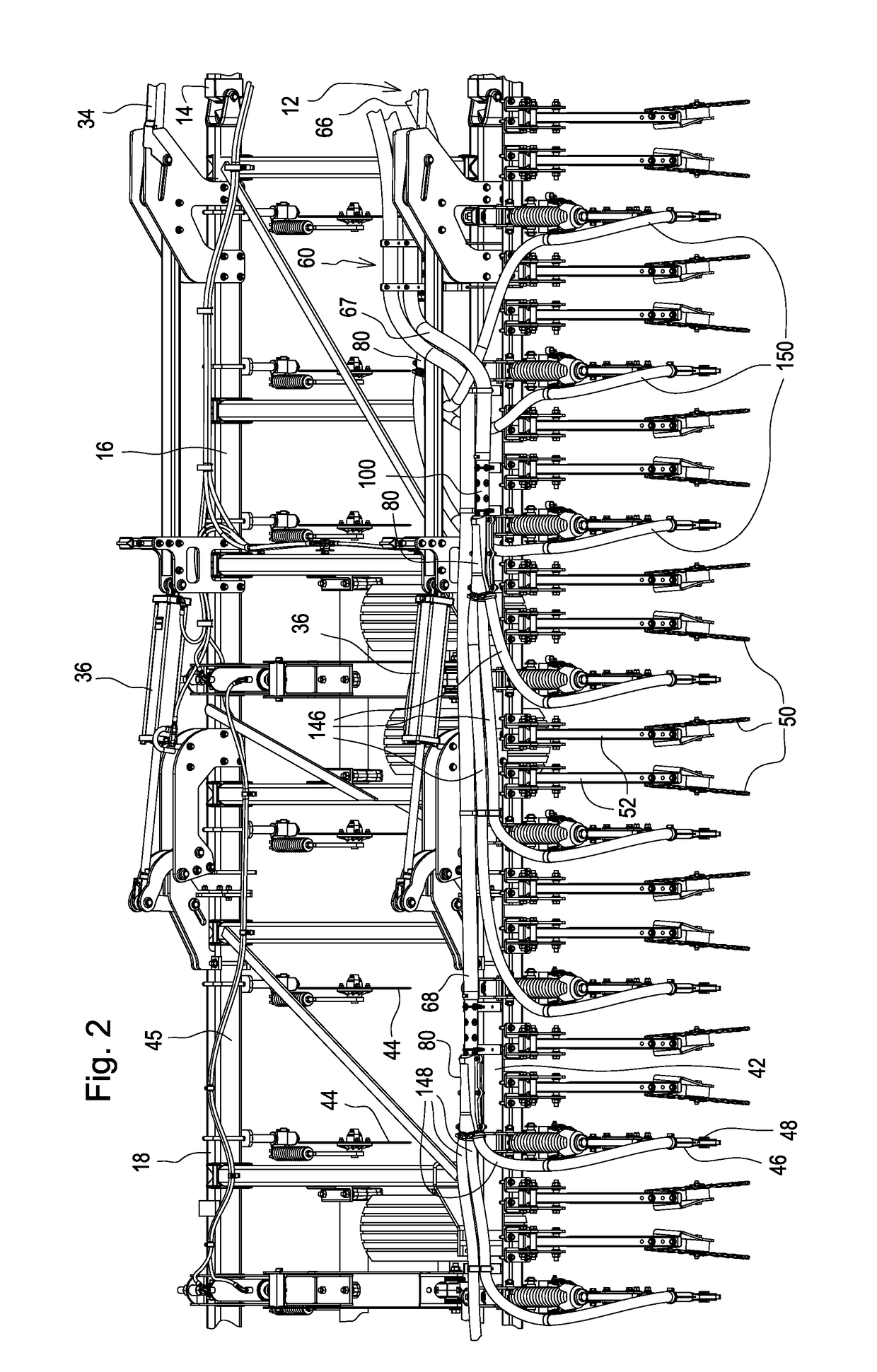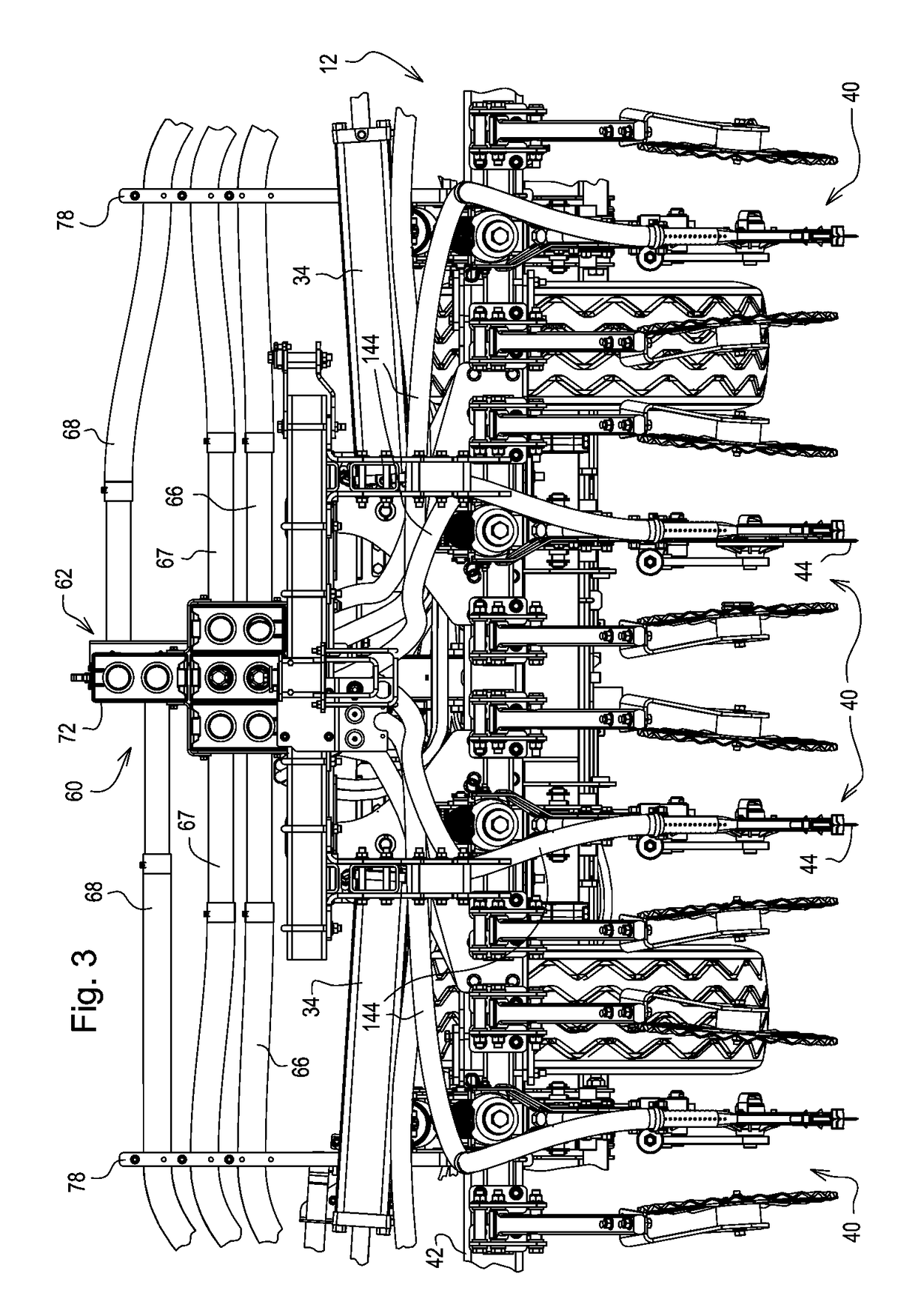Commodity splitter for an air delivery system
a technology of air delivery system and commodity cart, which is applied in the field of commodity cart, can solve the problems of difficulty in connecting the vertical tower to the implement frame, interference problems, and limited number of commodity carts, and achieve the effects of reducing height, facilitating mounting, and streamlined mounting appearan
- Summary
- Abstract
- Description
- Claims
- Application Information
AI Technical Summary
Benefits of technology
Problems solved by technology
Method used
Image
Examples
Embodiment Construction
[0020]Referring to FIG. 1, therein is shown a portion of a soil treatment implement 10 having a rectangular main frame 12 which includes a center section 14, an inboard wing section 16 hinged to the center section 14, and an outboard wing section 18 hinged to the center section 16. The right side of the implement 10 is generally the mirror image of the left side shown in FIG. 1. A central towing hitch 20 is connected to the front of the center section 14; and lift wheel assemblies 24, 26 and 28 support the frame 12 for forward movement over the ground.
[0021]Folding cylinders 34 and 36 pivot the wing sections 16 and 18 about fore-and-aft extending pivotal axes between an unfolded frame field-working position (shown) and a folded frame field-working position. In the folded position, the outboard wing sections 16 and 18 are folded adjacent each other and then lifted over the center section 14.
[0022]Commodity delivery tools indicated at 40 are spaced transversely along rear main frame t...
PUM
 Login to View More
Login to View More Abstract
Description
Claims
Application Information
 Login to View More
Login to View More - R&D
- Intellectual Property
- Life Sciences
- Materials
- Tech Scout
- Unparalleled Data Quality
- Higher Quality Content
- 60% Fewer Hallucinations
Browse by: Latest US Patents, China's latest patents, Technical Efficacy Thesaurus, Application Domain, Technology Topic, Popular Technical Reports.
© 2025 PatSnap. All rights reserved.Legal|Privacy policy|Modern Slavery Act Transparency Statement|Sitemap|About US| Contact US: help@patsnap.com



